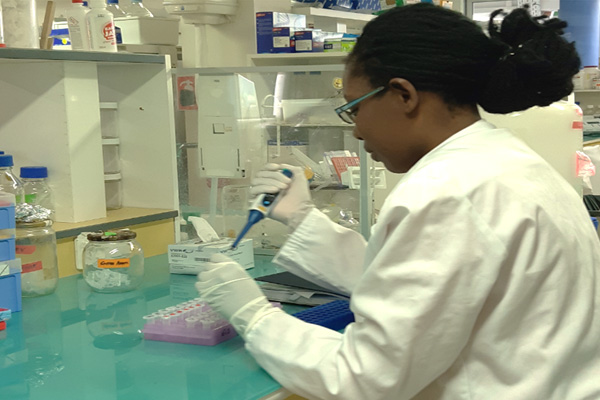The soil mycobiome is a major biological component involved in environmental and host functioning. Despite fungi fundamental role in ecosystem processes there is a lack of data on their distribution and biogeography in Subsaharian Africa. This study investigated the soil mycobiome composition within two ecoregion of Benin using the ITS region and 18S-V9 sequences extracted from the Global Soil Mycobiome Consortium (GSMc) open database (https://doi.org/10.15156/BIO/2263453). A beta diversity analysis followed by NMDS was applied to determine the similarities and differences between the climatic zones in terms of soil mycobiome composition. The multipatt function followed by a redundancy analysis (RDA) was applied to identify the species confined to each climatic zone and the drivers that govern the composition of the soil mycobiome. A total of 18 phyla were identified at the sampled sites with a dominance of Ascomycota in the Sudanian zone (53.34%) and Basidiomycota in the Sudano-Guinean zone (57.98%). The functional guilds were dominated by saprotrophs (21.52%) followed by ectomycorrhizae (10. 51%), arbuscular mycorrhizal fungi (10.16%) and plant pathogens (6.49%). The diversity indices and similarity analysis indicate a difference with some overlap (R = 0.3854), but not significant (p = 0.0566) in terms of soil mycobiome composition between the two areas. However, Aspergillus niger is confined (p = 0.0302) to the Sudan zone, while Fuscoporia senex (p = 0.0302) and Conocybe dunensis (p = 0.0302) are indicative of the Sudan-Guinea zone. This specificity of mycobiome composition is influenced by climate (temperature; p = 0.008). This study is among the pioneer works on soil mycobiomes according to climatic zones and environmental factors responsible for their distribution in Benin and also highlights the need for future research.
Keywords: Soil mycobiomes; environmental factors; Benin; climatic zone; indicator species; diversity.
Le mycobiome du sol est un composant biologique majeur impliqué dans le fonctionnement de l'environnement et de l'hôte. Malgré le rôle fondamental des champignons dans les processus écosystémiques, il existe un manque de données sur leur distribution et leur biogéographie en Afrique subsaharienne. Cette étude a examiné la composition du mycobiome du sol dans deux écorégions du Bénin en utilisant la région ITS et les séquences 18S-V9 extraites ITS etextraites de la base de données ouverte du Global Soil Mycobiome Consortium (GSMc) (https://doi.org/10.15156/BIO/2263453). Une analyse de la diversité bêta suivie par NMDS a été appliquée pour déterminer les différences entre les zones climatiques en termes de composition du mycobiome du sol. Une analyse de redondance (RDA) a été appliquée pour identifier les espèces confinées à chaque zone climatique et les drivers qui gouvernent la composition du mycobiome. Au total, 18 phyla ont été identifiés sur les sites échantillonnés avec une dominance d'Ascomycota en zone soudanienne (53,34%) et de Basidiomycota en zone soudano-guinéenne (57,98%). Les guildes fonctionnelles sont dominées par les saprotrophes (21,52 %) suivis des ectomycorrhizes (10,51 %), des champignons mycorrhiziens à arbuscules (10,16 %) et des phytopathogènes (6,49 %). Les résultats des indices de diversité et de l'analyse de similarité indiquent une différence avec quelques chevauchement (R = 0,3854), mais non significative (p = 0,0566) en terme de composition du mycobiome entre les zones. Cependant, Aspergillus niger est confiné (p = 0,0302) à la zone soudanienne, tandis que Fuscoporia senex (p = 0,0302) et Conocybe dunensis (p = 0,0302) sont des espèces indicatrices de la zone soudano-guinéenne. Cette spécificité de la composition du mycobiome est influencée par le climat (température ; p = 0,008). Cette étude, faisant partie des travaux pionniers sur les mycobiomes du sol met en évidence les possibilités de recherches futures.
Mots-clés: Mycobiome du sol, facteur environnemental, Bénin, zone climatique, espèces indicatrices, diversité.
DOI: https://doi.org/10.26167/f6f4-0q76
Received September 14th 2022 Revised October 12th 2022 Accepted November 20th 2022 Published 23th November 2022

infosim@sim-ivoire.com
+225 43 85 33 32 / 57 11 13 72
08 BP 2300 Abidjan 08
Views:
Download:
